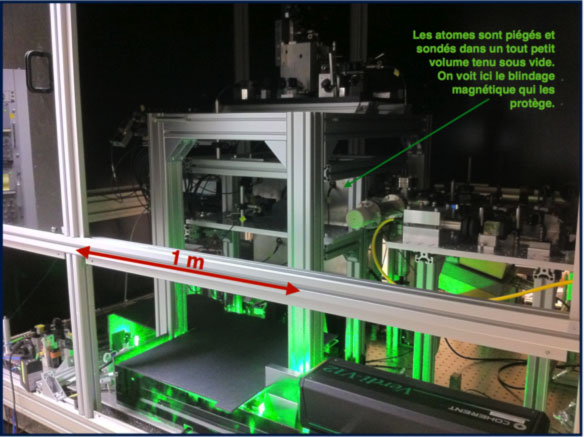The increasingly successful manipulation of cold atomic gases has led to the creation of increasingly sensitive and very promising quantum sensors such as gyrometers and accelerometers.
These compact architectures involve an increasingly high level of control of both inter-atomic interactions and their interaction with the environment, which can affect the coherence of the system.
The spin echo technique, derived from nuclear magnetic resonance imagery, is widely used and leads to extremely sensitive measurements.
An important issue in this context is the creation of compact sensors which can be used anywhere. For this, it is best to trap and guide the atoms magnetically or optically, thereby controlling and limiting their motions while enabling measurements over long periods of time.
However, in these systems where several tens of thousands of atoms are trapped in tiny 10x10x10 micron volumes, inter-atomic interactions affect how long one can use the quantum properties of the system of atomic spins.
The experiment in a trapped atom interferometer…

The physicists in the Systèmes de Référence Temps-Espace (SYRTE) department of the Paris Observatory have created and used an experimental ultra-cold atomic force detector in order to study quantitatively a type of interaction governed by periodic dynamics.
They have thereby revealed a surprising competition between the spin echo and the self-synchronized dance organized by the atomic interactions.
… comparison with models
Modelling atomic dynamics is no mean affair. Nevertheless, the LPS and the LPTMC have proposed a model which leads to a simple interpretation of the observed phenomena.
In fact, this model shows that the competition is a function mainly of the ratio of the exact period during which the atoms are anipulated using microwave pulses, to the duration of the dance, which is itself determined by the number of atoms, a parameter under full control.
There is remarkable agreement between the theoretical model and the accurate measurements carried out at the SYRTE.
These theoretical and experimental results reveal the the importance of interactions for the dynamics of compact atomic detectors.
There are repercussions both for the design of these devices, and for the physics of n-body quantum systems in which similar problems arise.
